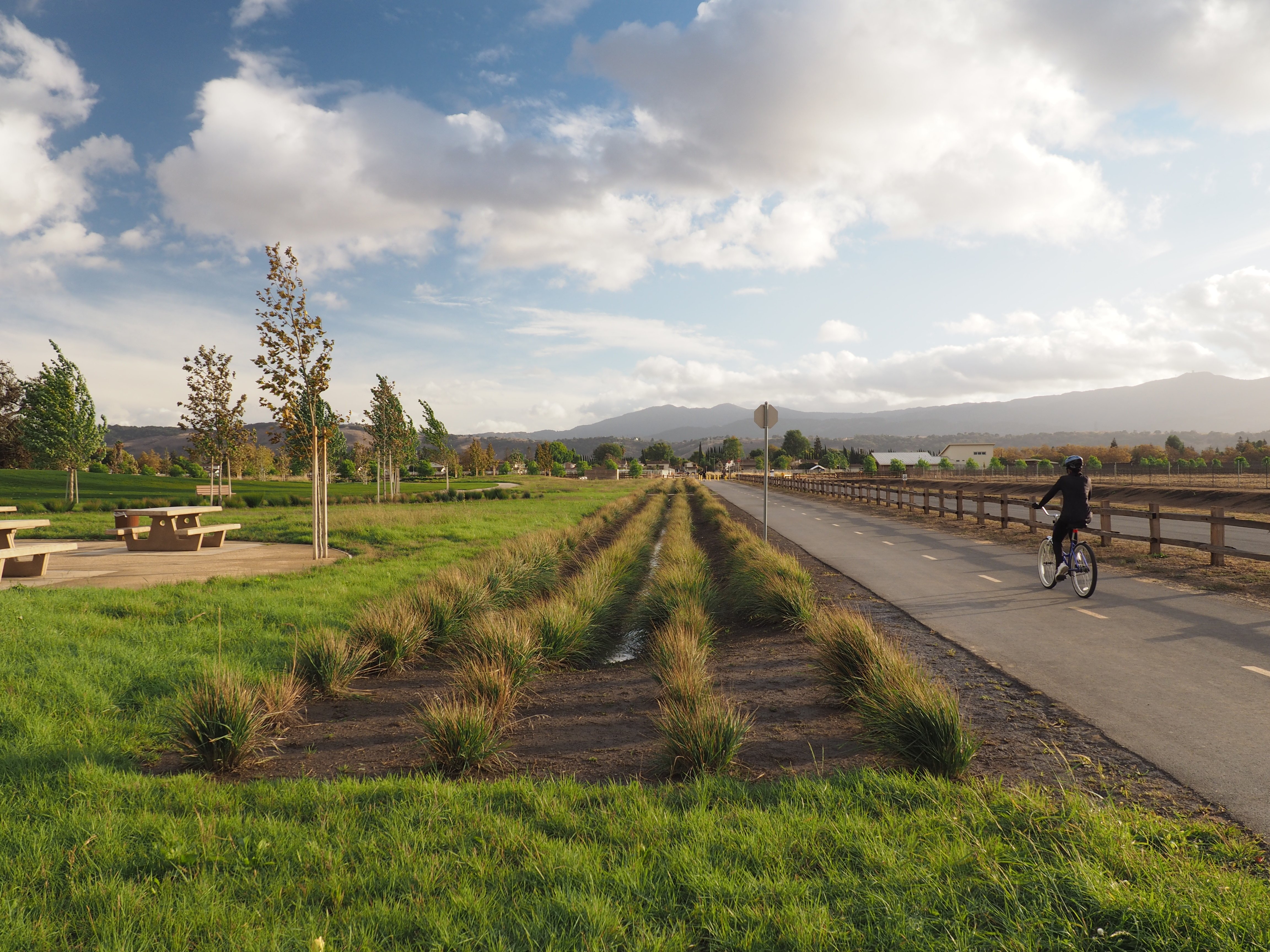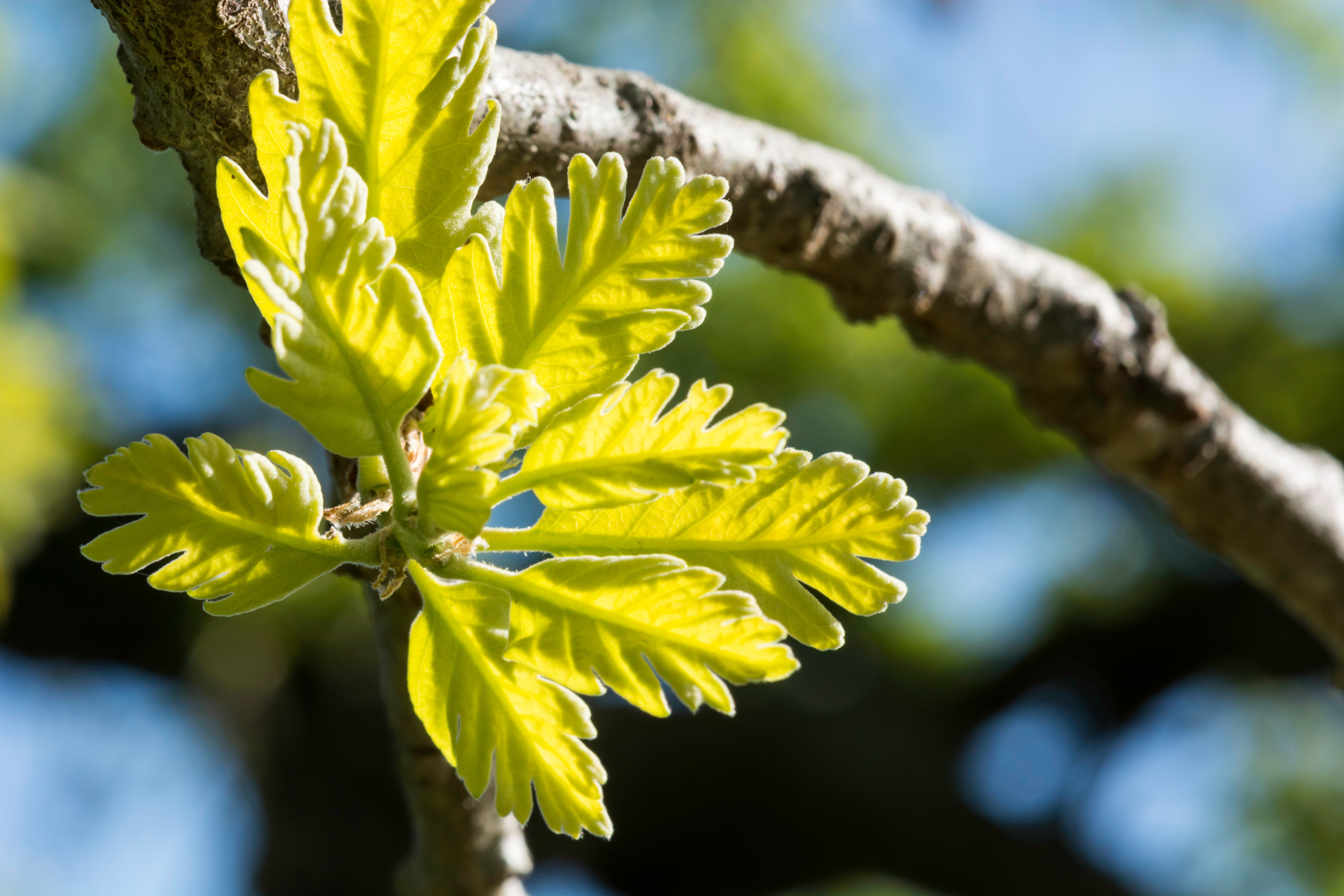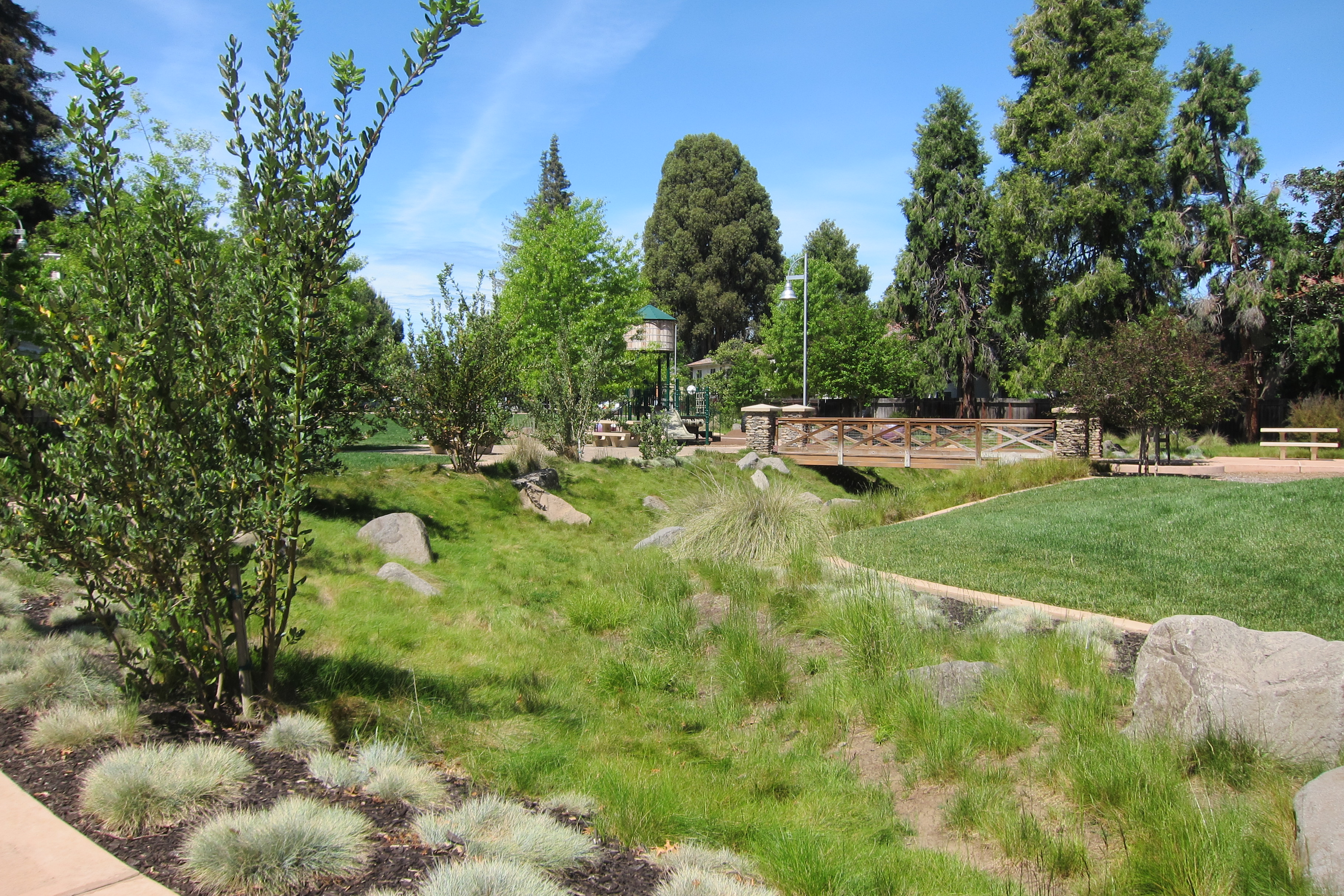Our urban landscape is a challenging place for native plants and wildlife to thrive. The sea of asphalt and pavement on our streets and sidewalks, as well as concrete, glass, and steel structures disrupt the movement of animals and provide barriers to the growth and dispersal of native plants, critical for urban biodiversity. Urban infrastructure has replaced vital “green” infrastructure that can help offset the loss of wildlife habitat.
A new guide prepared by the San Francisco Estuary Institute (SFEI) in collaboration with the Santa Clara Valley Open Space Authority sets forth a practical vision for improving the ecological health of San Jose and Santa Clara County. It shows ways that public agencies, private citizens, and business owners can help improve biodiversity by encouraging “urban greening,” providing and augmenting green spaces wherever possible, that can be used by locally native, wild plants and animals.
 The Urban Ecological Planning Guide for Santa Clara County, identifies key areas in the Santa Clara Valley where the integration of urban greening and ecological planning can help enhance our natural environment and make our region more resilient to the stresses of development and climate change. This can be done through planting various sized urban open spaces with native plants aiming to create viable wildlife habitat.
The Urban Ecological Planning Guide for Santa Clara County, identifies key areas in the Santa Clara Valley where the integration of urban greening and ecological planning can help enhance our natural environment and make our region more resilient to the stresses of development and climate change. This can be done through planting various sized urban open spaces with native plants aiming to create viable wildlife habitat.
The guide provides a toolkit of greening options that are suited to any type of parcel, residential, commercial, and public parks and public spaces. Some of these options include building or retrofitting residential gardens, greening roofs, softening parking lots, adding street and traffic circle trees, and improved landscaping in commercial spaces. Whether you are a single-family homeowner, a public park official, or the owner of a large office park, the guide provides options for building more habitat into your design. The guide sets this work in a historical context, sharing the original environmental conditions that were present in this region in centuries past and providing a detailed list of native trees and plants that are appropriate for each area so landowners can select the right plants for their region’s native habitat.

“Even small urban greening actions by individuals can help,” says Donna Plunkett, Planning Manager, Santa Clara Valley Open Space Authority. “This report helps to show the public that in addition to the larger land areas that we work to protect, there are opportunities for protecting wildlife and native plants at every scale in our urban environment.”

